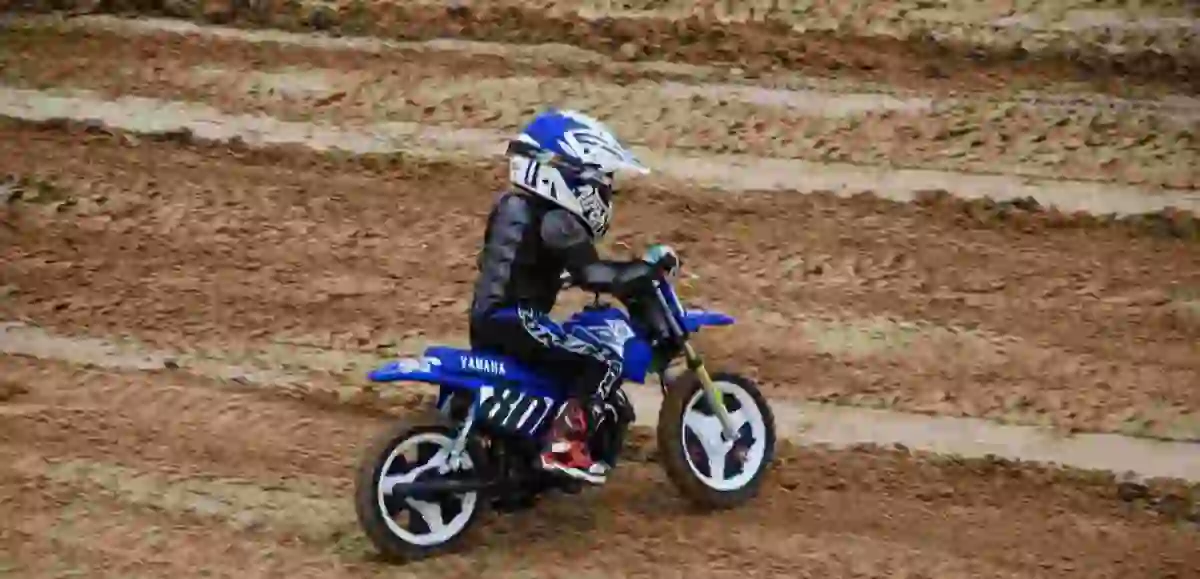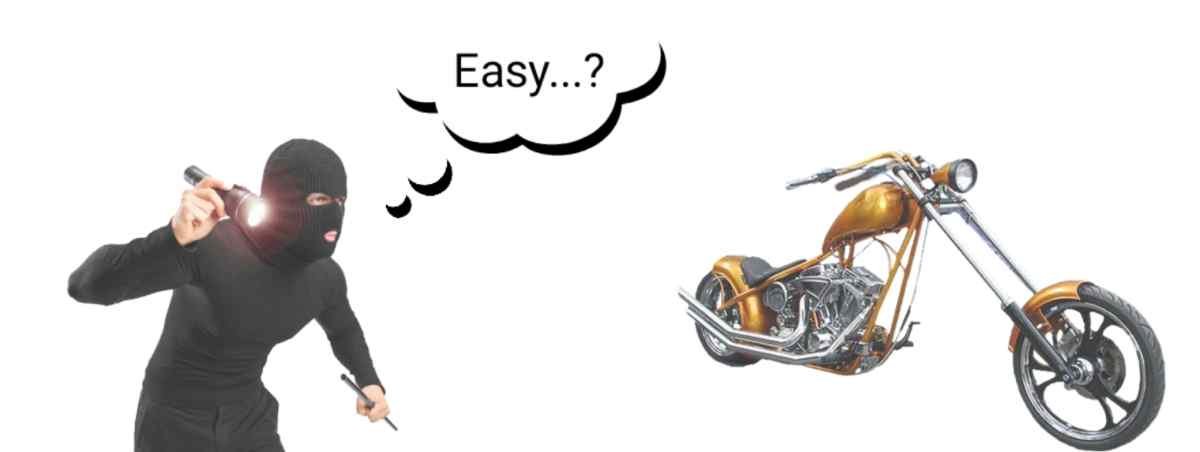Can you teach yourself to ride a motorcycle? It is inarguable that balancing two wheels at traveling speed can be challenging, especially when learning to ride alone. Nonetheless, it makes a great experience.
Learning how to ride a motorcycle is easier than it appears, especially if you’re a fast learner and determined. At first, it feels complicated, but within a few days of practice, you’d find yourself flying the roads.
Can you teach yourself to ride a motorcycle?

You can teach yourself to ride a motorcycle. However, you’d have difficulties maintaining the clutch and throttle ratio for the motorcycle to run. Ensure that you do not open the throttle excessively, and always drop the clutch lever gradually. Depending on your learning abilities, it can take between 20 and 50 attempts to master it, and you might struggle in traffic with half-clutch riding.
When you get the motorcycle running, it becomes easy to shift gear, and you can tell by the engine sound when to downshift or upshift. You just have to learn clutch throttle ratio, and you should be good in a few days.
Regarding ‘fear’, you’d be scared of managing the motorcycle, especially at high speeds or heavy traffic. But when you improve your riding abilities, fear vanishes, and you’d find yourself cruising through gaps confidently.
The most important thing, however, is to learn to ride a motorcycle yourself under someone’s supervision.
How to teach yourself to ride a motorcycle
1. Get Insurance and Permit
In most countries, you’d have to participate in a certified motorcycle safety course to get insurance.
But since you’re teaching yourself to ride, you can’t get insurance, meaning you must do without them. It’s dangerous, though, especially when you crash. And you must learn to ride on your property and not roadways.
Typically, you’d have to contact your local department of the motor vehicle or appropriate agency to get a learner’s permit. You may also be given courses guiding you on how to ride.
Meanwhile, can you ride a motorcycle without a license? In most cases, you can ride on private property and not on roadways.
2. Get a Lighter Motorcycle
You would need a lightweight motorcycle as a beginner to teach yourself how to ride a motorcycle. A maximum of 250cc motorcycle would be perfect, especially if it speeds up to 150 km/h.
A lighter motorcycle allows you to get a complete feel of driving and maneuver easily. Also, when the motorcycle falls, you’d easily pick it. A typical heavy bike is harder to ride whether you’re teaching yourself or not.
3. Learn the Theory First
It is important to take track-day courses with professional instructors that will disclose survival instincts and how to react. Go for a road-ride training course; a drive-fast racing course is not recommended.
You may rely on resources such as YouTube to learn various theories of riding a bike. You’d also develop a certain level of confidence when you grab a motorcycle to practice riding alone.
Understand that videos or track instructors only provide you with the tools, so you have to learn how to use them.
You can discuss with a friend to teach you the basic controls, including how to clutch, match brakes, etc. Also, learn to use the lights before you set off on the motorcycle.
4. Prepare Your Bike and Safety Gear
Ensure that your motorcycle is in good condition, including mirrors, flashers, heat protectors, etc. The electronics and mechanics must be functional, too.
Regarding the safety gear, gears (helmet, knee protectors, boots, and suit) that do not feel tough might result in injuries, like burning your leg on the exhaust when you crash. If you’re ignoring any gear, keep the helmet. A fall and a knock on your head could be the difference between life and death.
5. No Passenger, No Roadways
Depending on your state, it may be illegal to carry a passenger with a learner’s permit. Besides, it is unsafe.
Do not also ride on roadways, except after you pass the motorcycle road test. Consider riding in areas with no crowd and familiarize yourself with slow turns, corners, and traffic. You can improvise by placing various structures along the deserted area you practice on. Don’t go asphalt yet.
6. Anticipate and Don’t Be Scared
Typically, when riding a motorcycle, other road users might exhibit actions that require a quick reaction from your end. For instance, the motor vehicle ahead might come to a sudden stop, or a teenager/adult could rush into the road suddenly, leaving you with no room to react. Of course, you would crash, but you can reduce such circumstances by always anticipating and maintaining at least a 7-second distance from other road users.
7. Do Not Ride in Strong Winds and Rain
Before you start practicing, know when the wind is too strong to ride a motorcycle. As a beginner, you should not ride when the wind exceeds 20mph.
You will not find it comfortable riding a motorcycle in the rain while teaching yourself how to ride. Nonetheless, it’s OK to have the rain-riding experience, but it must not be on your first or second riding attempt.
Since you’re teaching yourself how to ride, consider passing the written and road test before gaining the experience.
When you ride in the rain, your motorcycle loses traction and handling it becomes more than thrice as hard. Meanwhile, it’s better to crash under the snow than in the rain; the slippery floor can drag you into greater danger.
But if you feel tempted to experience the difficulty riding in the rain as a beginner, make sure to ride slowly and accelerate or match the brake gently. You’d also need a helmet with a clear visor to enhance your vision. Drive carefully on hills and slow down when making turns. You’d also want to avoid road paints and manholes; they reduce traction.
Tips to Learn Riding a Motorcycle Alone
It’s quite easier to master riding a motorcycle through self-training. Below are helpful tips for riding a motorcycle yourself:
Maneuver at Slow Speed
As a learner, note that when you maneuver at a slow speed, you must use the clutch to control the speed. The clutch can give you little bursts of speed, and when you feel you’re losing control, pull in the clutch. You’d have to practice how to maneuver after someone shows you the basics.
Practice How to Make a Turn
Usually, a motorcycle wants to stay upright, but you must unbalance it turn by counter-steering. To turn right, for example, you push to the right grip and pull on the left to get back. The motorcycle will lean to the right, and you go right. The same principle applies when turning right.
A typical sports bike rider counter-steers by leaning shoulder into the turning direction, which puts weight on the grip inside. So, the more a biker leans, the harder they turn.
A typical dirt bike rider makes turns by staying upright and pulling on the outside grip, which turns the dirt bike. Meanwhile, you may be interested in recovering a dirt bike from an impound.
If you match the brake when making a turn, it causes the bike to lean farther and turn sharper. Accelerating or matching the gas pulls the motorcycle out of turn to keep it upright.
Stay Upright When Stopping
When stopping the motorcycle, keep it upright and straight. When you match the brake, the motorcycle will lean into a turn, which can cause the motorcycle to drop.
What is the best age to learn to ride a motorcycle?
There is no specified or regulated age; it depends on an individual, and some can start as early 5 years of age to learn to ride. If you would be teaching yourself to ride a motorcycle, 16+ years is the best.
How long does it take to learn to ride a motorcycle yourself?
How long it takes to learn how to ride a motorcycle yourself depends on individual abilities and determination. Some persons practice the basics within 3-5 days before they attempt riding without an instructor or supervisor. Normally, if you rely on yourself to ride a motorcycle well, it can take more than a year to become confident. Riders that learn under professionals understand not just how to ride the motorcycle but applicable road laws in their jurisdiction. The rule of thumb is to ride under close supervision and with no passenger.
Final Thoughts
Before you teach yourself to ride a motorbike, learn the theory and basics from a licensed biker. The recommended way to learn to ride is through a school. You will know beyond the motorcycle controls.
Meanwhile, without enrolling in a training course, get between a 90cc and 125cc motorcycle for better handling or control.
Do not ride on roadways; practice on corners, hills, and authorized private properties regularly. Be prepared to fall several times, though. And depending on where you fall, you may not get hurt, so do not practice on rocky areas.






